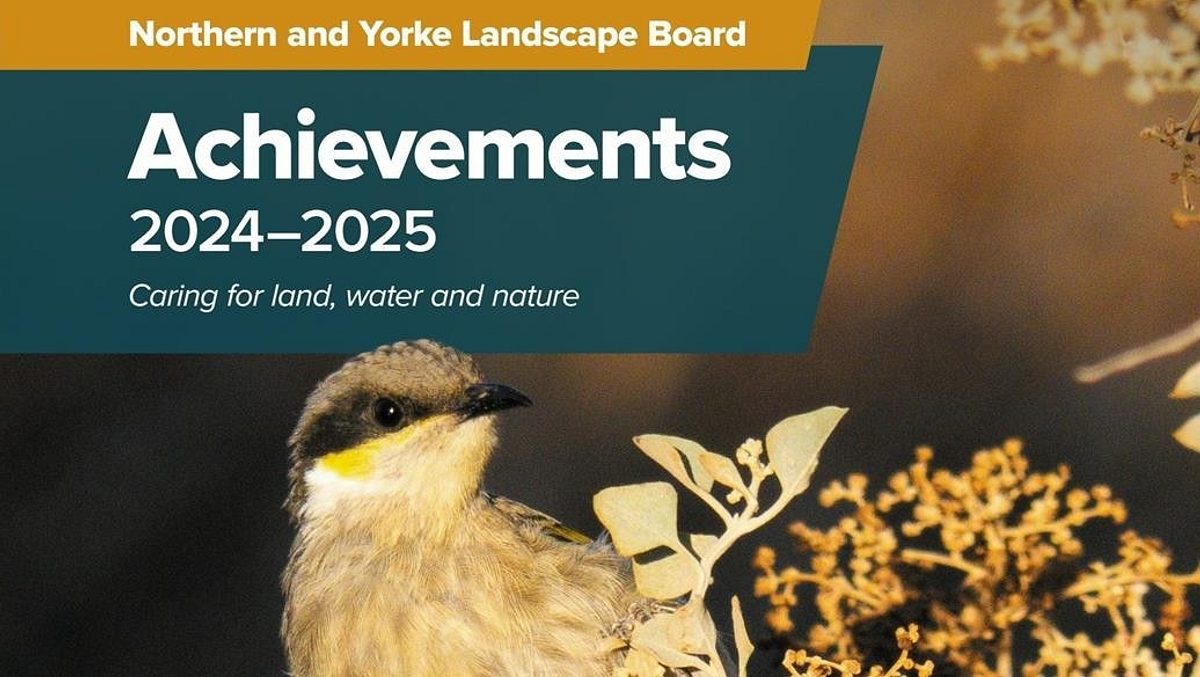Wildlife for Wine now open to Clare Valley growers
Media release about Clare Valley's Wildlife for Wine project
Wine growers looking to improve the resilience and green credentials of their vineyards now have access to the Wildlife for Wine program in the Clare Valley.
Launched in January by the Northern and Yorke Landscape Board in conjunction with the Clare Valley Wine & Grape Association, Wildlife for Wine promotes the positive ecological role that wildlife can play in local vineyards.
The program aims to increase a property’s biodiversity, and through native plantings and nest boxes attract native insects, predatory birds and microbats to help viticulturists naturally control pests and reduce their reliance on chemicals.
Wildlife for Wine started in the McLaren Vale region in 2018 and was rolled out in the Barossa during the past two years, with 18 growers involved.
Evan Gobell, owner and manager of Stonewell Cottages & Vineyards in the Barossa spoke at the Clare Valley Wildlife for Wine launch about his involvement in the program.
“The reality of the wine industry is that we’re not food producers, we’re producing a luxury item, and because we’re taking from the environment, we have a social obligation to give back,” he said.
“That’s the main driver for me. We’ve spent the past seven years revegetating non-production areas of our property to fulfil that obligation to the environment.”
Before planting 800 species as part of the Wildlife for Wine program last year, the Gobell family planted about 5000 native species across their 103-acre property near Seppeltsfield.
“The side benefit is that you’re improving the biodiversity around your vineyards,” said Mr Gobell. “Vineyards shouldn’t be a monoculture. You need the biodiversity to create a haven for native insects and birds, many of which are natural predators for common vineyard pests, such as rust mite, bud mite and light brown apple moth.
“Through our involvement in Wildlife for Wine, we had a native bird expert survey the birdlife on our property. He identified 45 species and 39 were native.
“Despite the proliferation of birdlife, we don’t have a significant problem with birds eating our grapes, because most of the species are insectivores.”
Landscape Officer Jamie Pook from the Northern and Yorke Landscape Board said the Wildlife for Wine concept was embraced by Clare Valley growers at the launch event held at Paulett Wines on Thursday, 28 January.
“Several vineyard growers, including Paulett Wines, have already committed to being involved, which is really encouraging,” said Mr Pook.
“One of the things they’ll get out of the program is an individualised Biodiversity Action Plan, which maps out the areas of their property best suited to revegetation, provides a planting guide with a list of recommended local native species and sets out a strategy for controlling pest plants and animals like rabbits, gorse, blackberries, olives and briars.
“We also conduct survey work to collect baseline data of which native species already exist on their property. Microbats are one beneficial species that are worth attracting to your vineyard. They eat half their body weight in bugs each night, so they are cheap, effective and natural pest controllers.
“We look at installing bat boxes to increase roosting sites for these tiny critters, which are about the size of a box of matches.
“We encourage other interested Clare Valley wine growers and viticulturists to get in touch with the Board. No property is too big or too small to be involved.”
For more details about the Clare Valley Wildlife for Wine project, please contact Jamie Pook from the Northern and Yorke Landscape Board on 8841 3444.


